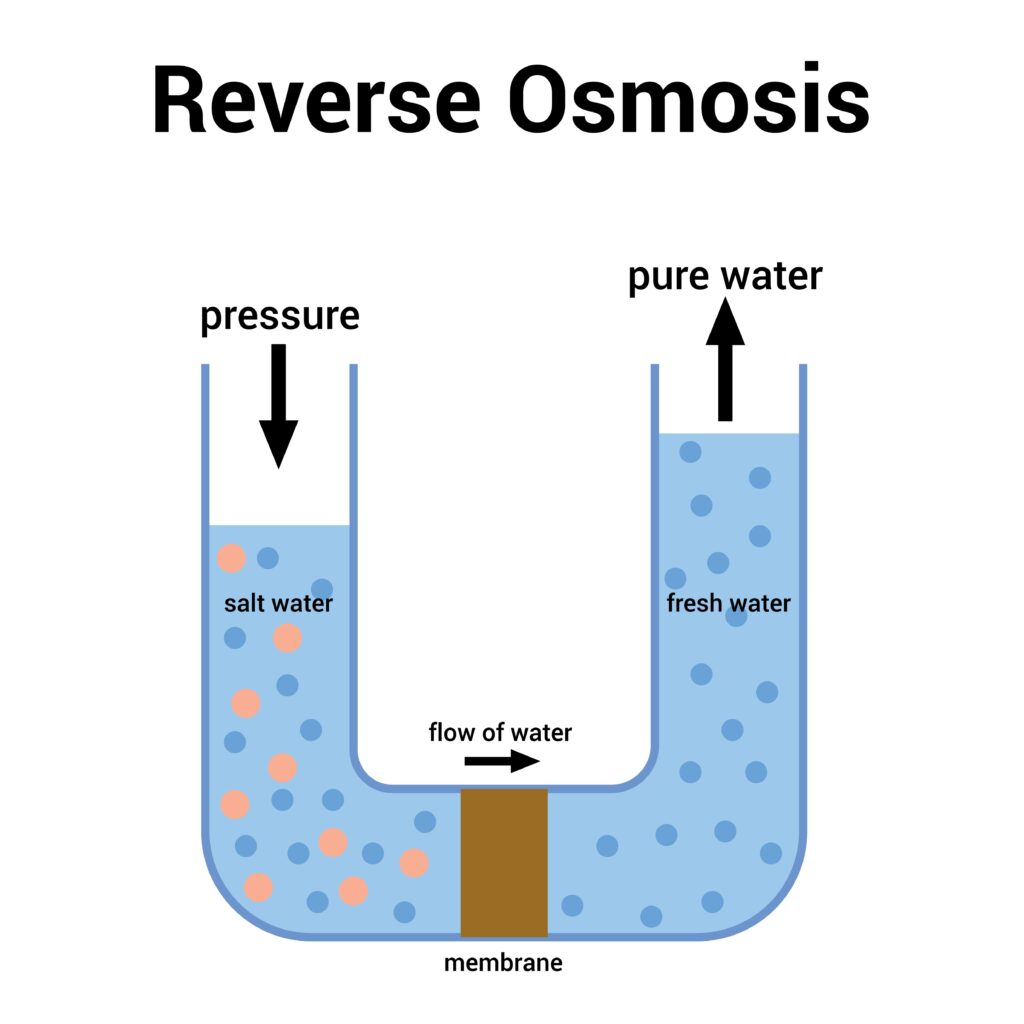The importance of clean, readily available freshwater cannot be overstated for anyone who spends significant time on the open ocean. No matter the length of your trip, access to pure drinking water is fundamental to your comfort and safety. This is where reverse osmosis (RO) technology shines. Understanding its workings empowers you to make informed decisions regarding your onboard water filtration system, guaranteeing a worry-free voyage.
This blog will dive into reverse osmosis, exploring how it works and what it can remove.
What Is Reverse Osmosis?

Reverse osmosis is a water treatment process that filters out impurities and contaminants from seawater, making it safe for consumption. At the heart of this technology is a semipermeable membrane. The membrane acts as a selective barrier, allowing only water molecules to pass while blocking larger ions, molecules, and impurities. This highly effective filtration method ensures that the resulting water meets stringent quality standards.
In the world of marine water makers, the reverse osmosis process is a cornerstone. It offers boat, yacht, and cruiser owners a reliable means of obtaining freshwater during extended journeys. To build an accurate picture of what makes reverse osmosis work, let’s take a closer look at its inner workings.
What Does Reverse Osmosis Remove?

The list of contaminants removed is impressive when it comes to water treated by reverse osmosis water systems. The semi-permeable membrane effectively blocks:
- Dissolved salts and minerals: These can render water unpalatable and even harmful in high concentrations. RO removes these, leaving freshwater as pure as bottled spring water.
- Organic contaminants: Traces of pesticides, herbicides, and other organic compounds can be present in seawater. Reverse osmosis filters these, ensuring your drinking water is safe and pristine.
- Bacteria and viruses: While not all bacterial and viral threats are eliminated, RO significantly reduces their presence, minimizing the risk of waterborne illnesses.
This process not only ensures the water is safe for consumption but also improves its taste and odor. As marine enthusiasts, we understand the importance of having drinkable and refreshing water during your voyages.
It’s crucial to note that the term “drinkable” here doesn’t merely signify the absence of harmful contaminants. Reverse osmosis transforms seawater into water that meets or exceeds the quality of many municipal water supplies. This means you can enjoy a clean and crisp taste, free from the typical brackishness associated with untreated seawater.
How Does Reverse Osmosis Work?

The magic of RO unfolds within a dedicated RO system aboard your vessel. Here’s a simplified breakdown of the process:
1. Prefiltration
Before water enters the semipermeable membrane, it passes through a prefilter. This removes larger impurities that may damage or clog the delicate membrane.
2. High-Pressure Pump
Once finely filtered, seawater is then pumped into a high-pressure pump. The pump forces the water through the semipermeable membrane at up to 1000 psi pressure.
3. SemiPermeable Membrane
This is where the real magic happens. The tightly woven polymer membrane allows only water molecules to pass through its microscopic pores, leaving behind a concentrated brine solution that is discharged overboard.
4. Post-Filtration
After passing through the semipermeable membrane, the filtered water undergoes post-filtration to remove any remaining traces of contaminants. This ensures it meets the highest water quality standards.
5. Storage and Distribution
The final step involves storing the freshly produced freshwater in a dedicated tank. Then, it can be distributed throughout your vessel’s water systems for use.
The duration of the RO process varies depending on the specific watermaker model and drinking water system settings. It typically takes a few minutes to an hour to produce a gallon of fresh water. However, modern watermakers boast impressive efficiency and productivity, ensuring a constant supply of treated water for your cruising needs.

Embracing RO Excellence with Cruise RO Water and Power
Reverse osmosis technology plays a crucial role in ensuring access to safe and clean drinking water during marine journeys. By effectively removing impurities and contaminants from seawater, it guarantees freshwater that is drinkable but also refreshing and enjoyable. Reverse osmosis has become essential for sailors seeking to maintain their comfort and safety on board.
At Cruise RO Water and Power, we recognize the unique needs of the marine community. Our watermakers are designed with precision and care to meet those demands. We offer powerful, cost-effective, and durable watermakers.
Explore our range of reverse osmosis systems and find the perfect fit for your vessel. Contact us today to learn more about reverse osmosis technology and how it can enhance your voyagesfr




